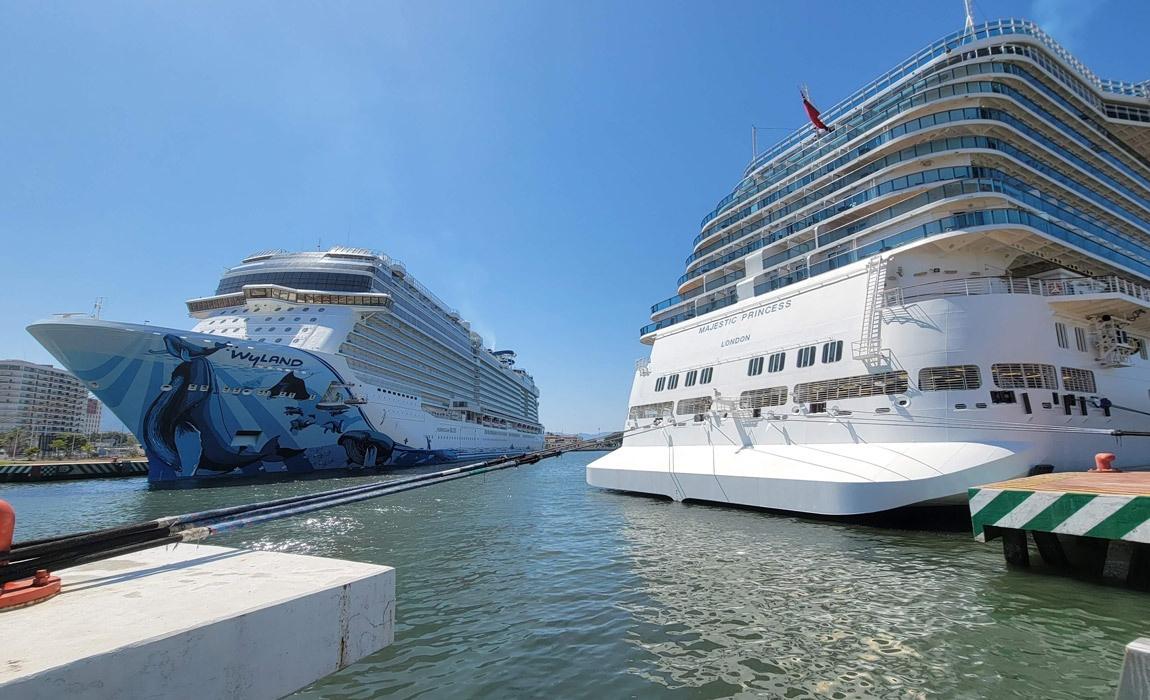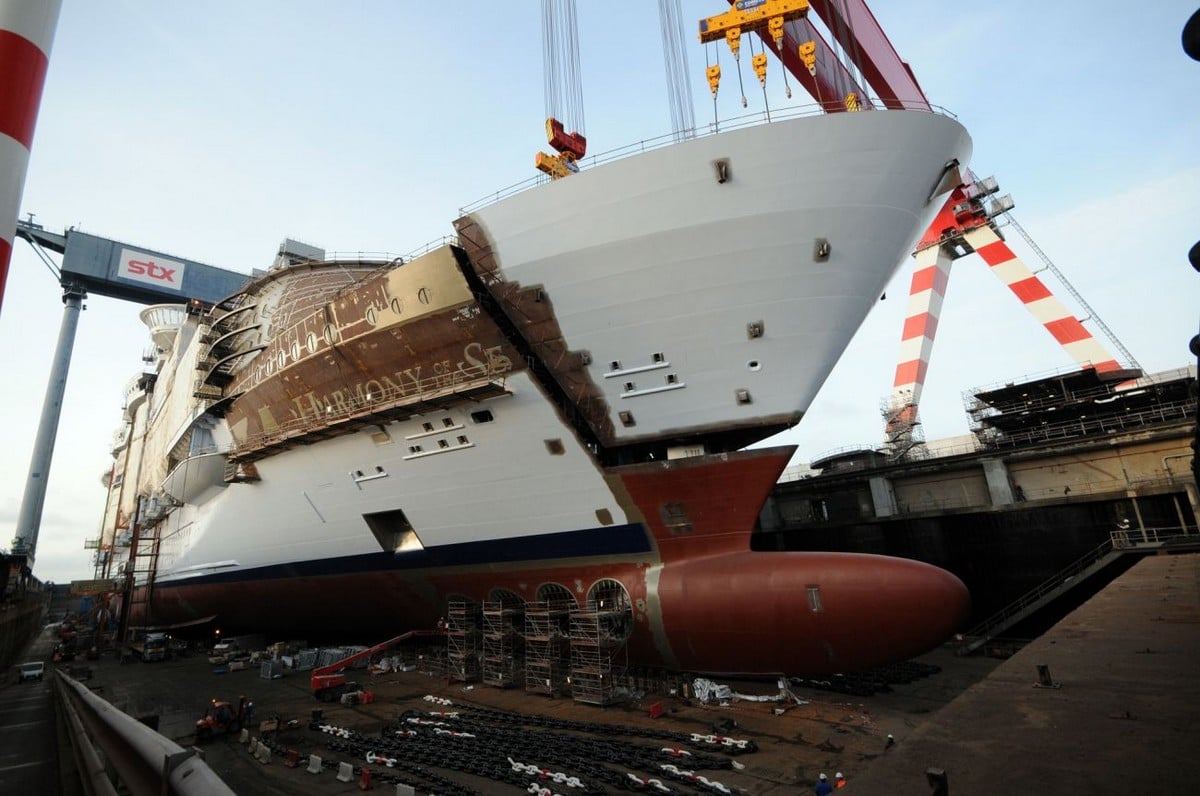Table Of Content

However, the steering and propulsion systems in Azipod arrangement, are combined into one part and the system consists of a propeller (driven by an electrical motor) turned by a rudder connected to the azipod system. Azipod cruise ship propulsion system is situated outside the hull in the aft of the ship. Azipod turns in all directions (360 degrees) by a rudder, providing thrust in any directions, not possible for conventional systems.
Engine Rooms
HFO (heavy fuel oil) is used by diesel engines, while MGO (marine gas oil) is used by gas turbine engines. Eliminating at-berth emissions by switching a ship’s engines to using clean electricity is a major strategy for phasing out air emissions. Each time a cruise ship docks in Seattle, it takes an average of 10 hours to offload guests and their luggage, load provisions, welcome new guests, and prepare for its next departure. While ships are at berth, they still need energy to run lights, chill food, operate equipment, and power a myriad of other onboard services.
Harvesting Solar Energy Way of the Future
If a penetration to the hull or fire happens, multiple compartments help contain the damage. Lloyd’s Register was involved in projects to mover further into electrification, including one in which two ferries operated between Denmark and Sweden by ForSea Ferries were converted from diesel-electric to battery-electric. They operate across the 4km Øresund Channel with deck-mounted 4MWh battery packs that are charged for 6-9 minutes on both sides of the channel, using four automatic ‘charging robots’. “We want those shore connections to be easily available for everybody,” he said. “Shipowners are not going to invest to ready their ships for shore power if they spend three hours connecting”.
Environmentally Friendly Power
World's largest cruise ship sets sail, bringing concerns about methane emissions - Reuters
World's largest cruise ship sets sail, bringing concerns about methane emissions.
Posted: Sun, 28 Jan 2024 08:00:00 GMT [source]
Cruise ships do offer public bathrooms; generally, they're located near big public spaces, such as the theater, main dining room and pool. Most will be able to accommodate passengers in wheelchairs; if not, chances are you'll find specific bathrooms for those with mobility issues nearby. Most are simply functional, but -- as with elevators -- the midship set in the central lobby, or atrium, tends to be a scenic, curving staircase, perfect for formal photos as well as useful for heading to the next deck. Certain behind-closed-doors elevators and staircases are reserved for the ship's crew; in emergencies, passengers would have access to these stairways as well. Shore power will play an important role in helping to deliver global net-zero ambitions.
These generator sets are larger and much more powerful than the DG sets found on a typical cargo vessel. It keeps out noise and reduces the heat generated by fully operating engines. The AIDAprima ship's first successful test run for LNG supply was in Hamburg Germany on May 7, 2016.

Portside Power

The power requirements of a cruise ship are a primary consideration when selecting an engine. Various factors influence these power requirements, including the ship’s size, weight, intended speed, and onboard facilities. Cruise ships require significant power to propel the vessel and operate numerous systems and amenities. COGAS systems are commonly used in larger cruise ships due to their enhanced efficiency and power output capabilities.
These ships incorporate a complete ABB propulsion - Azipods, electric power plant, computer automation, and software. Crystal cruise ships are powered by two "Azipod D" units allowing navigation in polar destinations. Each of the Star Cruises "Global-Class" vessels have three "Azipod XO" thrusters. All ships have installed ABB's "Intelligent Maneuvering Interface" and the "OCTOPUS" software optimizing fuel consumption and energy management. All these ships were constructed by the German shipbuilder MV Werften. Currently, almost 2/3 of all large-sized cruise vessels, icebreaking ships, and high ice-class cargo ships are with Azipod propulsion.
New York City Council Requires Most Cruise Ships to Use Shore Power - The Maritime Executive
New York City Council Requires Most Cruise Ships to Use Shore Power.
Posted: Wed, 13 Mar 2024 07:00:00 GMT [source]
Power Distribution System
With green-oriented companies, more green cruises have been released in the past few years. The technical aspects are a vital part of a cruise ship, so it will be first visited. Not to state the obvious, but the ship’s heart is shaped by the crew and the engineers that have put many hours and dedication into making a cruise ship work. If you are an engineer curious about a ship’s mechanics, this is an article for you. Fortunately, if you’re just a curious traveler wondering how a cruise vessel will shape your next trip, this is also for you, so read on. There is so much to a cruise ship other than the cocktails and fun parks on top.
In port, they are turned off, and smaller generators are used to supply the "hotel" load (i.e., lights, air conditioning, the galleys, etc.). Moving the ship through the water takes up the vast majority of a ship's need for power -- somewhere in the vicinity of 85 percent of the power a diesel electric plant produces goes to the propeller. The rest goes toward keeping the lights on and the passengers and crew comfortable. Diesel engines are commonly used in cruise ships due to their efficiency and reliability.
More or less, everything is distributed to operating proportions, but the key mechanics differ from one to another. Currently, the batteries have enough power for only 30 minutes of silent, emission-free navigation before the diesel engines are needed again; as the battery technology improves, Hurtigruten expects that time to increase. On some smaller and midsize ships, such as National Geographic Explorer or Windstar's Star Breeze, Legend and Pride, the concept has not changed dramatically.
By investing in environmentally-friendly technologies and adhering to stringent regulations, cruise ship operators are actively working to reduce emissions and create a more sustainable future for the industry and the environment. Cruise ship operators are also exploring other sustainable technologies, such as hybrid electric systems. These systems combine traditional engines with electric propulsion, allowing ships to operate on cleaner, electric power during certain parts of the journey.
These facilities require electricity and other energy sources to operate smoothly. The engine must have the capacity to generate sufficient electricity to meet these demands. While gas turbine engines offer several advantages, they also have some considerations to take into account, such as higher fuel consumption at lower speeds and the need for regular maintenance. However, ongoing advancements in gas turbine technology continue to improve their efficiency, reliability, and environmental performance. With industry-wide steps forward, any cruise line will offer more green options.
Traditionally ships, including cruise ships, have used heavyfuel oil, a sludgy substance left after petroleum has been distilled for morerefined products such as gasoline and jet fuel. While COGAS systems offer numerous advantages, they do require regular maintenance and expertise to ensure optimal performance. The integration of gas and steam turbines requires careful monitoring and control to maintain the balance between power generation and fuel efficiency. There are also smaller cruise lines that cater to a more intimate feeling among their guests. The three largest cruise operators are Carnival Corporation, Royal Caribbean International, and Star Cruises/Norwegian Cruise Lines. One of the key advantages of gas turbines is their quick startup time.

No comments:
Post a Comment